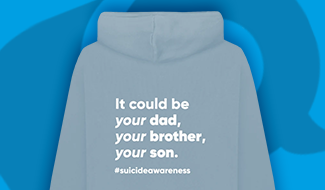The waggons of the law run upon the tramlines of well-ordered document management. All the orders, casemanagement decisions and judgments that are generated are made after consideration of a body of information, usually in ‘the bundle’ (the collection of case papers). The “papers” will be applications, orders made by the court and reports, evidence and sworn statements from the parties.
As soon as your case starts, whether you are the applicant or the respondent, you need to invest in stationery to sort out the papers. The earlier you do this the better.
Paper bundles USED to be a thing. And SO MUCH DRAMA was created about them. In fact, they had to have their own practice direction. Most courts refused to accept anything other than paper bundles and paper documents. However, about ten seconds after the Covid-19 lockdown was announced, electronic bundles started being used and approved by the courts. Obviously, this quickly became the only way to make a paperwork available quickly and in such a way that it accessible without lots of people copying/ posting/ delivering/ unpacking and passing it around, covered in germs.
It is highly likely that the current system of approvals for bundles to be electronic ( because technically according to rule 5.8 FPR PD27A para 2.5 bundles are paper unless approved by the local Designated Family Judge and the President of the family Division) will become the norm.
As soon as your case starts, whether you are the applicant or the respondent, you need to invest in stationery to sort out the papers. The earlier you do this the better. Do not throw away paperwork unless you are sure you won’t need it.
Get Ready
Must haves:
- Lever arch file – a chunky one! It should be strong enough to hold at least 4 inches thick of paper.
- Hole punch.
- Lined note pad.
- Pens.
- Envelopes & stamps.
- Post it notes large & small.
- File dividers.
- A small scanner/ printer.
- A secure place to put everything away from public view.
Nice to have:
- access to a professional Photocopier.
- Highlighters.
- Plastic wallets
- A subscription to a document management platform
At an early stage, it pays to decide if you are going to go paperless from the beginning, or not.
How to make your paper bundle
Divide up your file into the following sections using file dividers or post it notes:
- Section A – applications and orders, for example a C100.
- Section B – statements. At the beginning this is likely to be empty unless there is a without notice statement (for example in injunction proceedings).
- Section C – expert reports, for example Cafcass letters or reports.
- Section D – correspondence.
- Section E – bills, receipts and other money related stuff.
You should now have a “book” that has all the documents in chronological order as they come in, which would match anyone else’s “book” even if they weren’t made together at the same time.
How to make an electronic bundle
Seek out and take out the free trials for the various software platforms that provide a mixture of case management and bundle making capability. Ask them if they have a service for people acting in person. Well known ones include Caselines, Bundledocs and Zylpha.
You will absolutely need a scanner and easy uploading facilities. Therefore, you will need a decent computer that does not break down every five minutes.
You need to be disciplined and to upload stuff as it is received, then securely dispose of any paper copies. Remember, this documentation does not go into the recycling! It needs to be burned or criss-cross shredded.
Set the sections up as per the paper bundle format.
What’s the point of a bundle?
The idea behind a bundle is it creates a book which everybody else has a copy of. It allows the parties and the court to find a document easily, read the same thing at the same time and less time is lost faffing and trying to find the specific piece of evidence that needs to be considered.
There is a difference between your bundle and the court bundle. Your bundle can be a useful place for all your documents and you can choose what you put in it. The court bundle is the official case documentation and there are rules governing what goes into it. Those rules are found in the Family Procedure Rules 2010 at Practice Direction 27A – you can find it on the justice.gov.uk website.
Note that the Practice Direction does not allow sections D and E in the court bundle unless there is a specific evidential reason, so these are only for your private use. So no correspondence or bills/receipts go to the court.
The key point is that sections A, B and C of your ‘private bundle’ can also be used as your ‘court bundle’, so long as you have ordered everything in the right way and followed the practice direction.
TIP – make sure you have only single sided pages in the bundle. Use a photocopier to ‘undouble’ them if you receive double sided stuff.
How to paginate
The idea behind pagination is that not only does everybody have the same documents in the same section, each page has been given a page number that matches everybody else’s page numbers.
Here’s how it works:
Take section A. This should have all the applications and orders in it. Write in the top right hand corner the page letter and number. The first page is page A1, second page is A2 and so on. When you get to the end of the section, stop paginating!
Go to section B. The first page is B1, the second page is B2, and so on.
TIP – use a pencil, then you can rub out if there is a mix up and you need to start again.
Dealing with an index
You may be sent an index from the other party’s solicitors. This is a list of all the things that should be in the bundle and it should contain the pagination as well. Cross check that they have included all the documents. It is not uncommon for things to be missing and there are usually 2 reasons for this:
- Either they just didn’t realise something existed (pretty common when the solicitors were not involved from the beginning) – politely send them a copy of the document and ask for it to go in.
- Or, they want something excluded from the bundle for tactical reasons. What should you do about this? Firstly, double check the practice direction. Is what you want in allowed? If it is, then tell the solicitors politely that you will ask the Judge to consider whether it should be part of the official bundle at the hearing; then don’t forget to ask the Judge!
Dealing with duplicates
One of the most confusing things for those new to the court system is the sheer number of copies that seem to be generated. This happens for a number of reasons. The most common is because people are circulating a draft document, not the final version, to other interested parties. It can also be because a copy of an original document was used to prove a point about something.
The best rule to follow is to keep come out. When it arrives remove all drafts from your papers. It’s only real if there’s a seal!
TIP – the Practice Direction says there should be only 350 pages in the court bundle unless the Judge gives permission for more pages, so it pays to be ruthless with copy documents.
Advantages of being master of the paperwork
Keeping your bundle tidy will make you feel significantly better and in control. It is far easier for another person to help you if your paperwork is in order. Court time is severely limited. There is a world of difference between:
“Madam, can I ask you to look at C5 where the Cafcass officer clearly mentions her concerns over mothers ability to be positive about my sons relationship with me”.
and
“err, well I had it here somewhere, let me see
*empties plastic bag onto desk* it’s something the Cafcass officer said…”.
Additional Resources
You may also like to read:
‘How Should I Prepare For a Meeting With A Professional To Save Time And Money?’
‘How Can I Buy The Best Bits Of A Lawyer?’
If you are representing yourself in court many people find Lucy Reed’s book very helpful – ‘Family Court Without A Lawyer’
Posted on April 14, 2020














